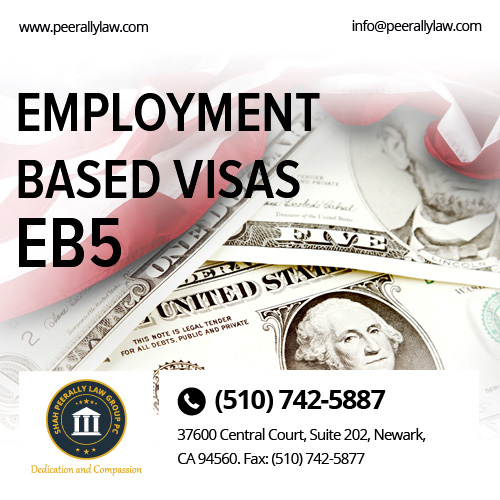In 1991, Congress created the EB-5 visa program to benefit the U.S. economy and create new jobs by encouraging foreign nationals to invest in the U.S. To qualify for an EB-5 visa, the individual must establish that (1) he or she is coming to the U.S. to invest in a new commercial enterprise, (2) the investment occurred after November 29, 1990 (the date the EB-5 program became effective), and (3) this ongoing enterprise will benefit the U.S. economy.
 Once granted an EB-5 visa, the individual, his/her spouse and children (under 21) are automatically granted conditional residency, which becomes permanent after 2 years. After 5 years in EB-5 status, an individual can apply for U.S. residency. There are 10,000 EB-5 visas available each year – 3,000 of which the USCIS sets aside for individuals who invest in approved “targeted employment” areas. “Targeted employment” typically refers to rural areas or areas that suffer from extremely low employment rates; each State’s Department of Commerce publishes a list of approved “targeted areas.” Note that the targeted employment plan is set to expire on September 30, 2008.
Once granted an EB-5 visa, the individual, his/her spouse and children (under 21) are automatically granted conditional residency, which becomes permanent after 2 years. After 5 years in EB-5 status, an individual can apply for U.S. residency. There are 10,000 EB-5 visas available each year – 3,000 of which the USCIS sets aside for individuals who invest in approved “targeted employment” areas. “Targeted employment” typically refers to rural areas or areas that suffer from extremely low employment rates; each State’s Department of Commerce publishes a list of approved “targeted areas.” Note that the targeted employment plan is set to expire on September 30, 2008.
Requirements
Generally, an individual must meet 3 requirements for an EB-5 visa: (1) the individual must invest in either a new or existing commercial enterprise; (2) the individual’s total investment must be $1,000,000; and (3) the new commercial enterprise creates at least 10 full-time jobs for U.S. workers.
- · An individual can invest in a “new commercial enterprise” in three ways. One, the individual can create a new business. Two, the individual can purchase an existing business provided that the individual immediately restructures or reorganizes the existing business to create a new commercial entity. Finally, the individual can expand an existing business by infusing it with a substantial amount of capital resulting in a 40% increase in either the business’s value or total number of employees.
- · Though the USCIS generally requires an individual to invest $1,000,000, a $500,000 investment may satisfy the requirement if it is in an approved “targeted employment” area. Furthermore, it is critical that the individual actively participates in the business endeavor instead of merely being a passive investor. For example, an individual may satisfy the “active investment” requirement if he or she purchases a warehouse and converts it into an auto body repair shop. However, if the individual merely purchased the warehouse without doing more, then he or she will likely be considered a passive investor and subsequently denied EB-5 status.
- · The investor can hire U.S. citizens, permanent residents, or immigrants with work authorization to fill the job openings. Although the individual’s spouse and children can work at the individual’s business, the USCIS does not consider them in assessing whether the individual’s business meets the minimum statutory requirement.
- · Where multiple immigrants pool their money together to invest in a commercial enterprise, each person’s individual investment in the enterprise must be $1,000,000. However, the USCIS does not require each individual investor in a commercial enterprise to meet the 10-job statutory requirement as long as the enterprise itself creates 10 or more jobs. For example, three immigrant investors can qualify for an EB-5 visa if each contributes $1,000,000 and the resulting business creates 12 jobs. Because the 12 jobs satisfy the USCIS requirements, all three investors have met the statutory requirement.
Filing Procedures and Additional Requirements
- To apply for an EB-5 visa, an investor must file a Form I-526 (Immigrant Petition by Alien Entrepreneur), pay the required fees, and submit documentation supporting the individual’s I-526. These documents must evidence the individual’s intent to invest in and maintain a new commercial enterprise, and can include:
- · Financial statements detailing that the individual’s capital came from a lawful source;
- · A business plan evidencing the individual’s continued involvement with the new business, including the individual’s duties and responsibilities;
- · Lease or purchase agreements for the new enterprise;
- · Escrow account statements;
- · New employment opportunities created by the qualifying enterprise. There are no minimum requirements for education, work experience, age, or English speaking abilities.
Note that the EB-5 visa does not require the individual to work in the same area as the individual’s investment, as long as the individual remains actively involved in the new business – i.e. an individual can reside in California and remain active in an out-of-state enterprise.

